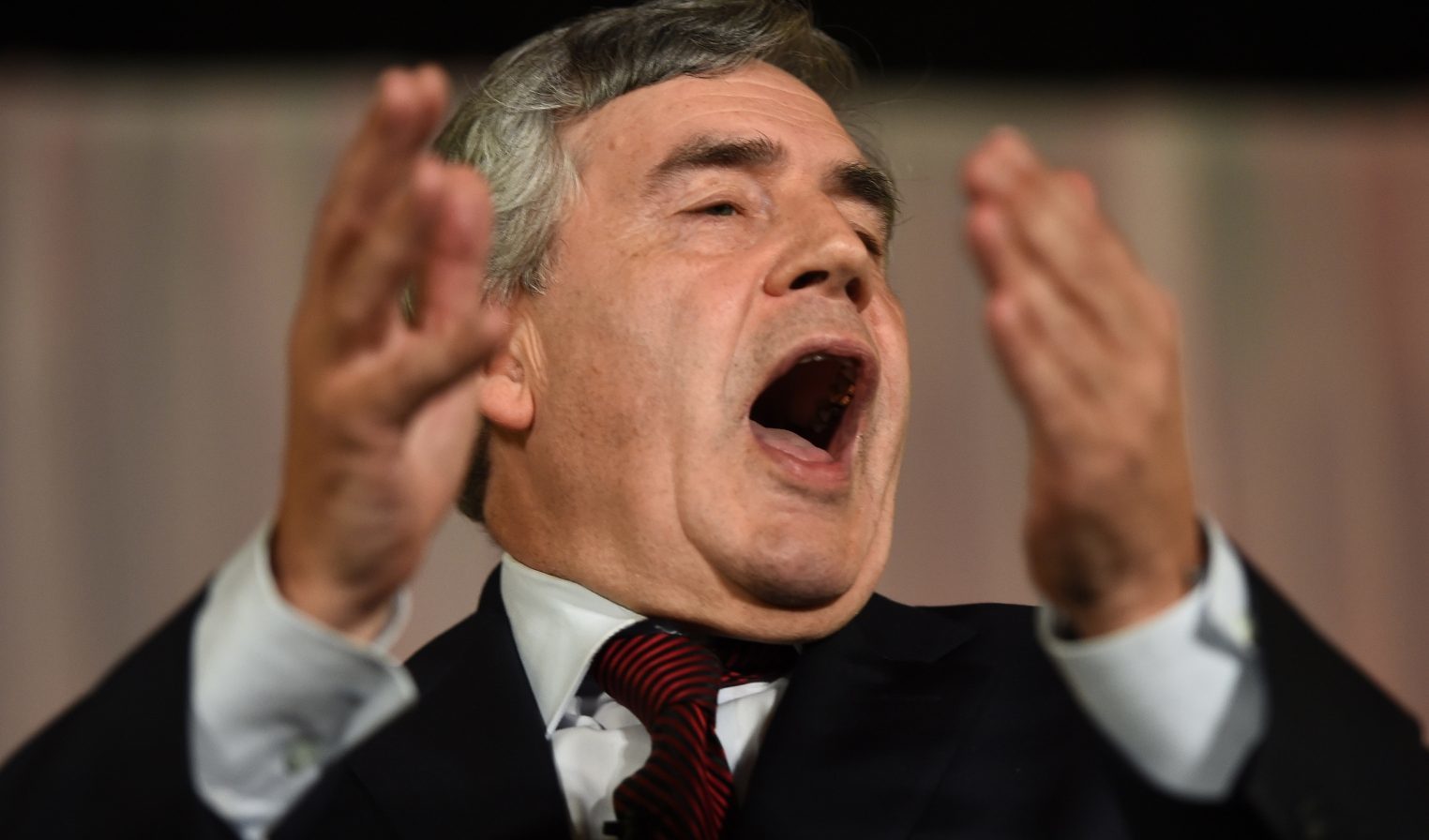There seems to be one thing that ex-prime minister Gordon Brown and present PM Boris Johnson agree on in their separate ploys to “save the Union” – the House of Lords needs a shake-up.
Johnson’s suggestion – and we can’t be sure that he is serious – is to shift the second chamber to York when the Parliament is shut for major refurbishment five years from now.
This is apparently his way of thanking voters in traditional Labour heartlands for voting for his party in December. But dumping peers on their doorstep is a funny kind of gratitude.
As Brown said: “An outdated institution 200 miles or so north of its current London location is still an outdated institution.”
Johnson’s gesture would be worthwhile if only to deprive those Lords and Ladies who show up just to collect their £300 daily expenses of an easy living.
Brown’s own plan to keep the United Kingdom intact is far more ambitious and clearly the result of much deeper thought processes.
Gordon Brown calls for Brexit powers to go to UK’s regions and not Westminster
In a speech in Westminster on Monday, organised by the Hope Not Hate group, he called for a constitutional convention and regional assemblies to reunite the country and redistribute power away from the capital. His fear is if the UK’s nations and regions do not get a “voice” in decision-making, the game will be over for the Union.
“We must reboot and renew Britain or we risk losing it,” he said, addressing post-Brexit divisions, as well as the recent success in the general election of the Scottish nationalists, which has led to their increasing clamour for another independence referendum.
His concern that the UK is “not at ease with itself” is not specifically about Scotland, but about the north-south divide in England too.
And, like Johnson’s plan to send the Lords off on the LNER, Brown’s proposals have some merit – there can be no harm, apart from the expense, in investigating then combating the over-centralisation of the state in London.
Regional disparities are indeed stark, and few would argue against building better infrastructure, improving transport links and investing more heavily in the Midlands and North.
But as Brown must know, the only real threat to the Union lies not in Birmingham, Manchester or Leeds, but north of the border, and the former MP for Kirkcaldy and Cowdenbeath could do more to safeguard it if he narrowed his focus.
He told the BBC that the SNP had not made the case for another Scottish independence referendum and that he hoped Labour and other parties would come forward with proposals for further devolution in Scotland.
But Brown, who ended up playing an important role in defending the Union in 2014, understands all too well that no amount of extra powers gifted to the Scottish nationalists will stop their demand for separation.
The extended devolution deal that followed the nationalists’ defeat more than five years ago has done nothing to quieten the Yes movement. The SNP cannot cope with all the powers it has, in fact, but is it happy? Of course not.
Brown’s idea of a “Forum of the Nations and Regions” could lay the foundations of a replacement for the House of Lords. It could even restore some political and economic balance to these isles.
But it would not halt the march of the Scottish nationalists – and Brown is surprisingly naive if he believes it could.
The Union can be maintained though, but by more conventional means – via the ballot box.
Despite their seat gains last December, the SNP won just 45% of the vote, which is more or less the same share that lost them the 2014 referendum. The collective unionist vote in Scotland far outweighs secessionist sentiment and polls continue to show strong support for the status quo.
If Scotland’s pro-Union majority prevailed in the next Holyrood elections, to be held next year, and Nicola Sturgeon was succeeded by a Tory, Labour or Lib Dem first minister, the risk of constitutional upheaval would surely recede.
Such an outcome is achievable if – and it’s a mighty if – the three unionist parties could agree to pool their resources and talents, and form an electoral pact.
They came together successfully once before, under the Better Together banner, and could do so again.
This is where Brown could really do some good.
Although far more removed from Downing Street than he was in the last referendum, he is still a big beast, especially in Scotland.
Imagine what could be achieved if he joined a non-partisan campaign to save the Union, and agreed to work with even the Tories to see off the nationalists.
Unfortunately, he has never had much of a stomach for compromise, and embracing Conservatives, however noble the cause, is not in his DNA.
It’s far easier to take a generalised swipe against London’s remoteness than face the music in Scotland.
